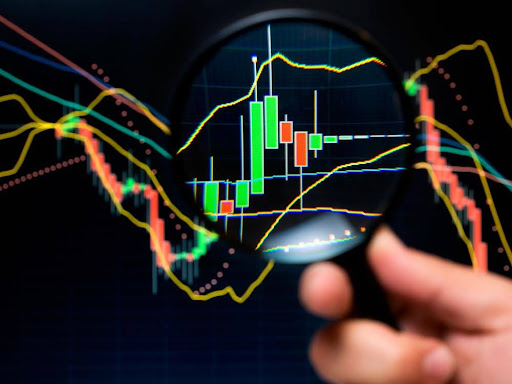For investors looking to get exposure to precious metals and other commodities, the world of COMEX trading presents a wealth of choices. But throughout your trading adventure, choosing the correct trading platform might be the difference between success and despair. In the current digital environment, there are many platforms that promise to provide the greatest features and services, making it more difficult to make an informed choice. Your choice of platform will act as your entryway to the marketplaces, impacting everything from cost effectiveness to execution speed. This in-depth article offers thoughtfully selected advice to enable you to assess and select a comex trading platform that best suits your trading preferences, degree of expertise, and financial goals.
1.Evaluate Trading Interface Design and User Experience
A well-developed trading interface is the key to profitable trading in COMEX, and it influences your ability to assess trends in the market and make transactions efficiently. Find sites that offer all the features of serious traders along with easy navigation, accurate display of prices, and easy trading processes that will not confuse beginners. Without needless clicks or perplexing choices, the interface should enable speedy order placing, modification, and cancellation. Think about platforms with configurable layouts that let you choose how charts, books, and account information are arranged. No matter where you are or what platform you’re using, you can trade efficiently thanks to a simple, responsive design that works flawlessly on both desktop and mobile devices.
2.Analyze Fee Structures and Hidden Costs Thoroughly
Maintaining profitability requires an understanding of a COMEX trading platform’s whole cost structure, particularly for busy traders who conduct many transactions per day. Examine spreads, overnight financing fees, inactivity fees, withdrawal costs, and data feed expenditures in addition to the apparent commission fees. These can have a big effect on your bottom line. Although some platforms claim to have no fees, they make transactions more costly than they first appear by compensating with larger spreads or greater financing charges. Calculate possible expenses depending on your anticipated trading frequency and position sizes, and get comprehensive charge schedules. While platforms with hidden fees sometimes employ ambiguous wording or conceal crucial information in long terms and conditions pages, transparent platforms are quick to offer thorough cost breakdowns.
3.Assess Research Tools and Market Analysis Features
Superior research capabilities distinguish professional-grade platforms from entry-level trading interfaces and provide the analytical foundations you need to make informed comex trading platform decisions. To conduct a more advanced market research, seek out platforms providing advanced charting capabilities with several technical indicators, drawing tools and different period settings. Economic calendars, news feeds, market commentary and fundamental analysis websites should also be followed to gain a deeper insight into the dynamics that drive changes in the price of commodities. Most high-performance platforms provide screening devices, access to historical information, and backtesting services to enable traders create and improve their strategies. Take great caution as to whether the research material is in-house or obtained through reputable outside sources so that you are actually getting up to date, accurate and relevant information to make your trade decisions.
4.Examine Order Execution Speed and Reliability Standards
Platform performance in addition to dependability are crucial assessment factors in the volatile COMEX markets since execution speed has a big influence on trade results. Looking at the average execution time, especially when the volatility is high and it is important to execute orders with a high frequency to maximize profit or reduce loss. Server infrastructure of the platform, redundancy processes and past uptime history: To gauge reliability during critical trading times, look at server infrastructure. Good technological infrastructure ensures that performance remains consistent even during peak trading times, as well as systems that have direct access to the market and may even provide quicker execution. Before investing real money in any platform, think about utilizing demo accounts to verify execution speeds under various market conditions.
5.Review Customer Support Quality and Accessibility Options
Responsive, informed customer service really matters during busy COMEX trading sessions when technical issues arise or urgent trading questions must be answered in a timely manner. Check to see the phone, email, and live chat support facilities at the time you want to trade based on the schedules of the outside markets. During your review process, ask targeted queries concerning platform features, trading protocols, or account administration to test response times as well as support quality. Seek out platforms that provide specialized assistance for varying levels of competence, ranging from basic advice to sophisticated technical support for intricate trading tactics. The platform’s dedication to promoting customer success along with lowering need on in-person support encounters is evident in its extensive FAQ sections, and video lessons, as well as instructional materials.
6.Test Platform Stability During High-Volume Trading Periods
Stress-testing is extremely important when selecting a COMEX platform, for it is only through stressing the platform in unpredictable market conditions that the smart-trading systems can be set apart from those that fail when you need them most. Test the performance of platforms in previous significant market events, economic announcements or times of high volatility that are likely to stress the capacity of the system. Avoid systems, which have a history of crashing, freezing, or connectivity problems at a critical time and instead consider platforms that can demonstrate their ability to continue operating during peak trading hours. To see platform performance up close, use demo accounts during times of volatility. Pay close attention to order execution, price feed dependability, and interface speed.
Conclusion
Many aspects that fit your unique trading demands, level of expertise, and long-term goals must be carefully considered while choosing the best crypto trading platform. Give yourself time to understand all the criteria, and practice functionality on dummy accounts, and where feasible, consult other traders. You must remember, however, that what works on one trader, may not always work on another, and, consequently, your decision process will be subject to both testing and self-assessment. You need to find a platform that offers the best features, cost, reliability, and customer service that best suits your trading requirements in addition to style.



